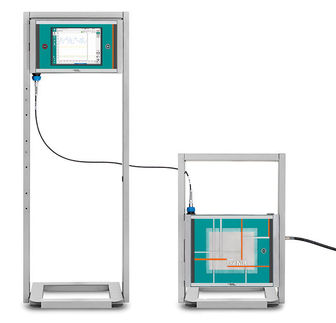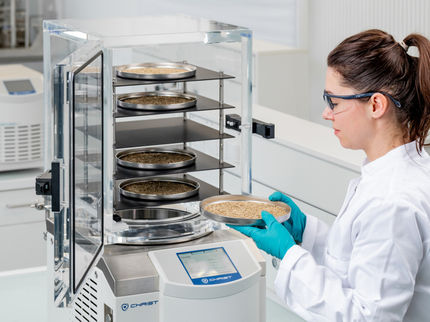Myocarditis
Classification & external resources
|
|
| Histopathological image of viral myocarditis at autopsy in a patient with acute onset of congestive heart failure. Viral etiology, however, failed to be determined in postmortem serological study.
|
| ICD-10
| I09.0, I51.4
|
| ICD-9
| 391.2, 422, 429.0
|
| DiseasesDB
| 8716
|
| MedlinePlus
| 000149
|
| eMedicine
| med/1569 emerg/326
|
| MeSH
| D009205
|
In medicine (cardiology), myocarditis is inflammation of the myocardium, the muscular part of the heart. It is generally due to infection (viral or bacterial). It may present with chest pain, rapid signs of heart failure, or sudden death.
Signs and symptoms
The signs and symptoms associated with myocarditis are varied, and relate either to the actual inflammation of the myocardium, or the weakness of the heart muscle that is secondary to the inflammation. Signs and symptoms of myocarditis include:[1]
Since myocarditis is often due to a viral illness, many patients give a history of symptoms consistent with a recent viral infection, including fever, diarrhea, joint pains, and easy fatigueability.
Myocarditis is often associated with pericarditis, and many patients present with signs and symptoms that suggest concurrent myocarditis and pericarditis.
Diagnosis
Myocardial inflammation can be suspected on the basis of electrocardiographic results (ECG), elevated CRP and/or ESR and increased IgM (serology) against viruses known to affect the myocardium. Markers of myocardial damage (troponin or creatine kinase cardiac isoenzymes) are elevated.[1]
The ECG findings most commonly seen in myocarditis are diffuse T wave inversions; saddle-shaped ST-segment elevations may be present (these are also seen in pericarditis).[1]
The gold standard is still biopsy of the myocardium, generally done in the setting of angiography. A small tissue sample of the endocardium and myocardium is taken, and investigated by a pathologist by light microscopy and—if necessary—immunochemistry and special staining methods. Histopathological features are: myocardial interstitium with abundant edema and inflammatory infiltrate, rich in lymphocytes and macrophages. Focal destruction of myocytes explains the myocardial pump failure.[1]
Recently, cardiac magnetic resonance imaging (cMRI or CMR) has been shown to be very useful in diagnosing myocarditis by visualizing markers for inflammation of the myocardium.[3]
Causes
A large number of different causes have been identified as leading to myocarditis:[1]
- Infectious:
- Viral (e.g. enterovirus, Coxsackie virus, rubella virus, polio virus, cytomegalovirus, possibly hepatitis C)
- Bacterial (e.g. brucella, Corynebacterium diphtheriae, gonococcus, Haemophilus influenzae, Actinomyces, Tropheryma whipplei, and Vibrio cholerae).
- Spirochetal (Borrelia burgdorferi and leptospirosis)
- Protozoal (Toxoplasma gondii and Trypanosoma cruzi)
- Fungal (e.g. aspergillus)
- Parasitic: ascaris, Echinococcus granulosus, Paragonimus westermani, schistosoma, Taenia solium, Trichinella spiralis, visceral larva migrans, and Wuchereria bancrofti
- Rickettsial
- Immunological:
- Toxic:
- Physical agents (electric shock, hyperpyrexia, and radiation)
Bacterial myocarditis is rare in patients without immunodeficiency.
Epidemiology
The exact incidence of myocarditis is unknown. However, in series of routine autopsies, 1–9% of all patients had evidence of myocardial inflammation. In young adults, up to 20% of all cases of sudden death are due to myocarditis.
In South America, Chagas' disease (caused by Trypanosoma cruzi) is the main cause of myocarditis.
Therapy
Bacterial infections are treated with antibiotics, dependent on the nature of the pathogen and its sensitivity to antibiotics. As most viral infections cannot be treated with directed therapy, symptomatic treatment is the only form of therapy for those forms of myocarditis, e.g. NSAIDs for the inflammatory component and diuretics and/or inotropes for ventricular failure. ACE inhibitor therapy may aid in the healing process.
Famous deaths
- Rod Donald
- Andrea Dworkin
- Andy Gibb
- Janet Munro
References
- ^ a b c d e Feldman AM, McNamara D. Myocarditis. N Engl J Med 2000;343:1388-98. PMID 11070105.
- ^ Eckart RE, Scoville SL, Campbell CL, Shry EA, Stajduhar KC, Potter RN, Pearse LA, Virmani R. Sudden death in young adults: a 25-year review of autopsies in military recruits. Ann Intern Med 2004;141:829-34. PMID 15583223.
- ^ Skouri HN, Dec GW, Friedrich MG, Cooper LT (2006). "Noninvasive imaging in myocarditis". J. Am. Coll. Cardiol. 48 (10): 2085-93. doi:10.1016/j.jacc.2006.08.017. PMID 17112998.
| Circulatory system pathology (I, 390-459) |
|---|
| Hypertension | Hypertensive heart disease - Hypertensive nephropathy - Secondary hypertension (Renovascular hypertension) |
|---|
| Ischaemic heart disease | Angina pectoris (Prinzmetal's angina) - Myocardial infarction - Dressler's syndrome |
|---|
| Pulmonary circulation | Pulmonary embolism - Cor pulmonale |
|---|
| Pericardium | Pericarditis - Pericardial effusion - Cardiac tamponade |
|---|
| Endocardium/heart valves | Endocarditis - mitral valves (regurgitation, prolapse, stenosis) - aortic valves (stenosis, insufficiency) - pulmonary valves (stenosis, insufficiency) - tricuspid valves (stenosis, insufficiency) |
|---|
| Myocardium | Myocarditis - Cardiomyopathy (Dilated cardiomyopathy, Hypertrophic cardiomyopathy, Loeffler endocarditis, Restrictive cardiomyopathy) - Arrhythmogenic right ventricular dysplasia |
|---|
Electrical conduction system
of the heart | Heart block: AV block (First degree, Second degree, Third degree) - Bundle branch block (Left, Right) - Bifascicular block - Trifascicular block
Pre-excitation syndrome (Wolff-Parkinson-White, Lown-Ganong-Levine) - Long QT syndrome - Adams-Stokes syndrome - Cardiac arrest - Sudden cardiac death
Arrhythmia: Paroxysmal tachycardia (Supraventricular, AV nodal reentrant, Ventricular) - Atrial flutter - Atrial fibrillation - Ventricular fibrillation - Premature contraction (Atrial, Ventricular) - Ectopic pacemaker - Sick sinus syndrome |
|---|
| Other heart conditions | Heart failure - Cardiovascular disease - Cardiomegaly - Ventricular hypertrophy (Left, Right) |
|---|
| Cerebrovascular diseases | Intracranial hemorrhage/cerebral hemorrhage: Extra-axial hemorrhage (Epidural hemorrhage, Subdural hemorrhage, Subarachnoid hemorrhage)
Intra-axial hematoma (Intraventricular hemorrhages, Intraparenchymal hemorrhage) - Anterior spinal artery syndrome - Binswanger's disease - Moyamoya disease |
|---|
Arteries, arterioles
and capillaries | Atherosclerosis (Renal artery stenosis) - Aortic dissection/Aortic aneurysm (Abdominal aortic aneurysm) - Aneurysm - Raynaud's phenomenon/Raynaud's disease - Buerger's disease - Vasculitis/Arteritis (Aortitis) - Intermittent claudication - Arteriovenous fistula - Hereditary hemorrhagic telangiectasia - Spider angioma |
|---|
Veins, lymphatic vessels
and lymph nodes | Thrombosis/Phlebitis/Thrombophlebitis (Deep vein thrombosis, May-Thurner syndrome, Portal vein thrombosis, Venous thrombosis, Budd-Chiari syndrome, Renal vein thrombosis, Paget-Schroetter disease) - Varicose veins / Portacaval anastomosis (Hemorrhoid, Esophageal varices, Varicocele, Gastric varices, Caput medusae) - Superior vena cava syndrome - Lymph (Lymphadenitis, Lymphedema, Lymphangitis) |
|---|
| Other | Hypotension (Orthostatic hypotension) |
|---|
| See also congenital (Q20-Q28, 745-747) |
|







